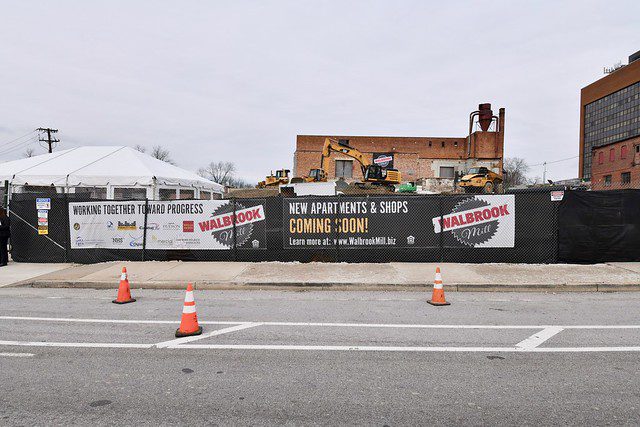
Densely populated cities—many of which already face displacement pressures and offer limited opportunities for low-income communities—are bracing themselves. An estimated $7 trillion in investments are anticipated to flow to low-income census tracts through Opportunity Zone tax incentives. Created as a part of The Tax Cuts and Jobs Act in December 2017, Opportunity Zones were designed to attract private capital to areas that have long been neglected by business, large and small.
Depending on how local policymakers manage the capital infusion, this wave could either enrich low-income communities, or it could sideline and push out many of the almost 19 million low-income residents who live in the nearly 9,000 zones across the country. Outcomes will be determined primarily based on how cities act, now. Elected officials must advance the policies necessary to protect the residents most at risk for displacement and ensure that the most vulnerable residents will benefit from these investments.
Recently, PolicyLink staff attended the Opportunity Zone Investor Summit hosted by Accelerator for America. The summit showcased a number of groups who are working to foster connections between cities, stakeholders, developers, and investors to advance inclusive Opportunity Zone projects. While most speakers expressed excitement for the potential of Opportunity Zones, participants acknowledged that the success of this tool will require that all stakeholders focus on the interests of the people whom this legislation was intended to serve—particularly low-income residents and people of color.
To date, most discussion about Opportunity Zones (including guidance from the U.S. Treasury) has been geared toward investors and how they can benefit from the tax break. City leaders, however, must develop policy frameworks to ensure that the investments do what they were created to do: 1) alleviate poverty, 2) create jobs, and 3) support small and local business.
PolicyLink has developed some guiding principles that city and state officials, equity advocates, philanthropic leaders, investors, and developers can use to ensure that investments are equitable and help prevent displacement. Here are some key takeaways for urban policymakers:
- Engage community members throughout the development process. “Opportunity Zones are going to work. The question is who they are going to work for?” Maurice Jones, president & CEO of LISC said. Extensive community engagement and resident participation is necessary to ensure that Opportunity Zones move from transactional to transformational. Local leaders must engage community in every aspect of the process, including planning, policy development, investment, construction, operation, and ownership. During an Accelerator for America meeting in Birmingham last month, Birmingham Mayor Woodfin announced the city’s Opportunity Zone investment and capacity building framework, called the Inclusive Growth Initiative Partnership, which plans to incorporate a people-centered focus by training 500 residents on what Opportunity Zones are and how they work.
- Develop equitable development strategy alongside Opportunity Zone investments. The Opportunity Zones program is one new tool available to help transform neighborhoods. To utilize it properly, local policymakers must have a strategy for equitable development and for fighting displacement when growth occurs. This includes tenant protections, tax aid programs for low-income homeowners, and strong demolition ordinances that safeguard people’s homes, so that they are not destroyed to make way for new projects.
- Cities should develop specific targets and requirements for the number of affordable housing units preserved and created at or below 60 percent AMI, based on local needs. They should also require that a high percentage of quality, living wage jobs go to local residents, while ensuring that any real estate developments include supports for contracts and wealth building opportunities for existing local businesses owned by people of color. See examples of these equitable development standards in practice.
- Enforce equitable development standards through local zoning and permitting authority. Standards should be used as requirements, not simply goals. While city officials may be concerned with competing with other cities to attract investment, they should prioritize the interests and needs of the residents already living there. Working simultaneously with community partners, developers can help assure that the cost-benefit analysis can be advantageous for all, not just investors. Standards should be used to grant permits to build new projects that benefit local, low-income residents, and prevent potentially harmful projects that don’t account for local benefits. Boulder, Colorado, has temporarily suspended permits for certain new developments (such as those that don’t meet on-site affordability requirements) in their Opportunity Zone to allow time to develop regulations that reflect the priorities in their comprehensive plan.
- Incentivize good behavior and responsible investments. For decades, investors’ return on investments (ROIs) were largely measured by profits. In the era of Opportunity Zones, investors should understand that good returns can only occur when vulnerable residents’ needs are also protected and advanced. Socially responsible investment that can create permanent low-income housing, such as community land trusts, lease-to-own projects, and community crowdfunded investment funds, can and should benefit from the Opportunity Zones program, and should be incentivized through city policies and programs. Cities (and some states including California) are considering ways to offer additional incentives (tax, fast-track permitting, and others) to promote the types of investments that are urgently needed to advance low-income residents and local small businesses. Berkeley, California, recently passed a resolution to create a municipal Qualified Opportunity Fund that would invest in projects that provide significant affordable housing, create good jobs, and grow business opportunities for underrepresented groups, and include a community engagement process.
Local and state governments, community advocates, philanthropic groups, and others are all trying to disentangle the opportunity that lies within Opportunity Zones, and protect it from potential threats. While the program could potentially inject much needed capital into communities that have been neglected for decades, cities must take action to make sure that investments that come into vulnerable places present healthy, sustainable, and equitable opportunities for residents.
It is imperative to intentionally work with community and put safeguards in place to guarantee that true transformation takes place for residents of these communities. If city leaders are not careful, this wave of speculation will do more harm than good.




Comments